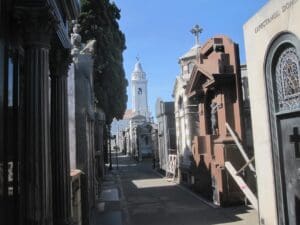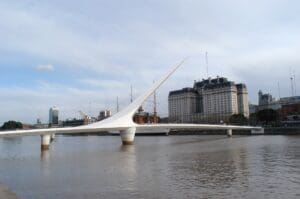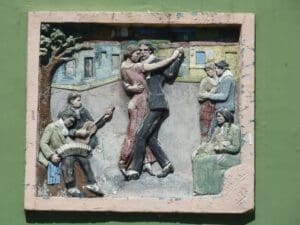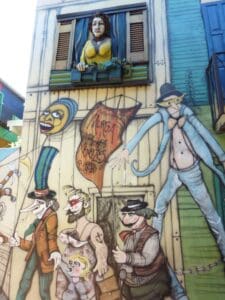PTCOG Newsletter #5 | Early Carrier Researchers ECR
Fire up your engines 🔥, PTCOG-63 is knocking at the door! Our annual meeting to share the hard work of the past year and stay on track with the advancement of particle therapy from all over the world!
Within a busy but exciting schedule of scientific talks, workshops, summits, subcommittee meetings, industry exhibitions, and networking events, if you look carefully at the program, a three-letter name will recurrently pop up to your eye: ECR.
The ECR, Early Career Researchers, subcommittee is at the dawn of its second PTCOG annual conference! If last year PTCOG was a success for the ECR subcommittee, this year we hope it will be even more!
If you have any doubts, we will be recognisable thanks to our ECR stickers! So we encourage everyone, from academia to clinics to industry, and especially senior people, to engage with us! Meeting, chatting and exchanging opinions with more experienced people cannot but help us grow up and learn, we come to PTCOG for this!
The ECR subcommittee has three simple goals, and we have been/are/will be doing everything to reach them:
- To be a lighthouse for anyone who is new to PTCOG
- To be a stronghold for all affectionate ECRs
- To be heard from and to give something to the rest of PTCOG community
We have a busy schedule ourselves, including pre-conference events as well! So be sure not to miss anything!
📺 Wednesday 21st May, h 16-17 CEST – PTCOG-ECR Webinars: “Meet the Subcommittees (Part 1)”. We really want to make sure you are not missing anything about PTCOG. Did you know PTCOG has a lot of different subcommittees focusing on specific research topics? We are going to present them all in a series of two webinars. This first webinar will feature: Pediatrics, Thoracic, BNCT, Gynecologic, CIRT Guidelines, Patient Relations, Gastrointestinal (GI), and Beam Delivery Technology subcommittees. Register here!
📺 Thursday 29th May, h 16-17 CEST – PTCOG-ECR Webinars: “Meet the Subcommittees (Part 2)”. This second webinar of the series will feature: Breast, Genitourinary (GU), Ocular, Skull Base, CNS, and Sarcoma, AI, Radiobiology, and Treatment Efficiency subcommittees. Register here!
🏠 From Tuesday, 3rd June to the end of the conference – ECR Booth in the Exhibition area! The ECR basecamp, where you will always find some ECR and you are always welcome whatever you seek: information on ECR events, information on the ECR subcommittee, a hug, a pause, sharing a dream, sharing your stress, sharing a success, sharing a flop, … Come and meet us, and don’t forget to collect here the ECR sticker!
🥳 Tuesday 3rd June, h20 ish – ECR Social event! Join us after the Welcome Reception for (a moderate number of) drinks and some good fun. This is the perfect chance of meeting other ECRs, making friendships that can last for a career-time, and (why not?) finding fresh minds to start scientific collaborations and come up with ground-breaking projects! We are making sure to have a place close to the conference venue which can host us all, and we will have a pub quiz and little games to propose…we just miss you! Come and sign up for the ECR Social event at our ECR booth!
📆 From Wednesday 4th June to the end of the conference – a new mentoring format in collaboration with IBA! A one-to-one mentoring slot with some passionate IBA representatives, directly at the IBA booth. The initiative will run for the whole conference duration, upon reservation of the one-to-one slot. Additional details will come up soon. Stay tuned.
📆 Wednesday 4th June, h 11:45-12:30, Room: Atlantico A – the annual ECR Subcommittee in-person meeting! Where you can hear all the updates of this past year, the plans for next year, and discuss some main subcommittee-related topics together.
🍕 Wednesday 4th June, h 12:30-13:30, Room: Executive Room Pacara A+B – the first Mentor Lunch: “Careers in Academia”. Our exclusive mentor lunch event, dedicated to careers in academia. Join us and engage with this year’s mentors: Pierre Montay Gruel, Nancy Mendenhall, Jacinta Yap, and Takahiro Oike. All ECRs are welcome to join the event by signing up for it at the ECR booth at PTCOG-63.
📣 Thursday 5th June, h 13:45-14:30, Room: Buen Ayre B&C Hall – Plenary Session: “How to deal with unexpected results”, featuring Dr. Jason Efstathiou and Dr. Jeanette Jansen. A plenary session entirely organised and moderated by ECR, where we hope to see ECRs and not ECRs attending and to give you all some stimulating points of reflection on a topic complementary to the main scientific tracks! Come, listen, interact, …and reflect.
🍕 Friday 6th June, h 12:30-13:30, Room: Buen Ayre A Hall – the second Mentor Lunch: “Careers in Industry”. Our exclusive mentor lunch event, dedicated to careers in industry. Join us and engage with this year’s mentors: Tina Yu (from Mevion), Erik Engwall (from RaySearch), Francois Vander Stappen (from IBA), and a fourth one to be confirmed. All ECRs are welcome to join the event by signing up for it at the ECR booth at PTCOG-63.
Additional information on ECR events can be found on the ECR page of PTCOG-63 website!
And if while waiting for PTCOG-63 to kick off you get bored, you are more than welcome to watch our first successful webinar “Career Opportunities in Industry” we held on the 23rd April! It is available for streaming via the PTCOG-63 platform at this link: https://ptcog63.org/virtual-login/ . If you have not registered yet, you can still do it here.
For now, it’s all. We really look forward to seeing you in Buenos Aires!
If you are lost, come and see us at the ECR Booth!
We are ready, we are excited, and we will light up PTCOG, once again!
Let’s do science when we work, and love each other the rest of the time!
Gabriele Parisi, on behalf of the PTCOG-ECR subcommittee










